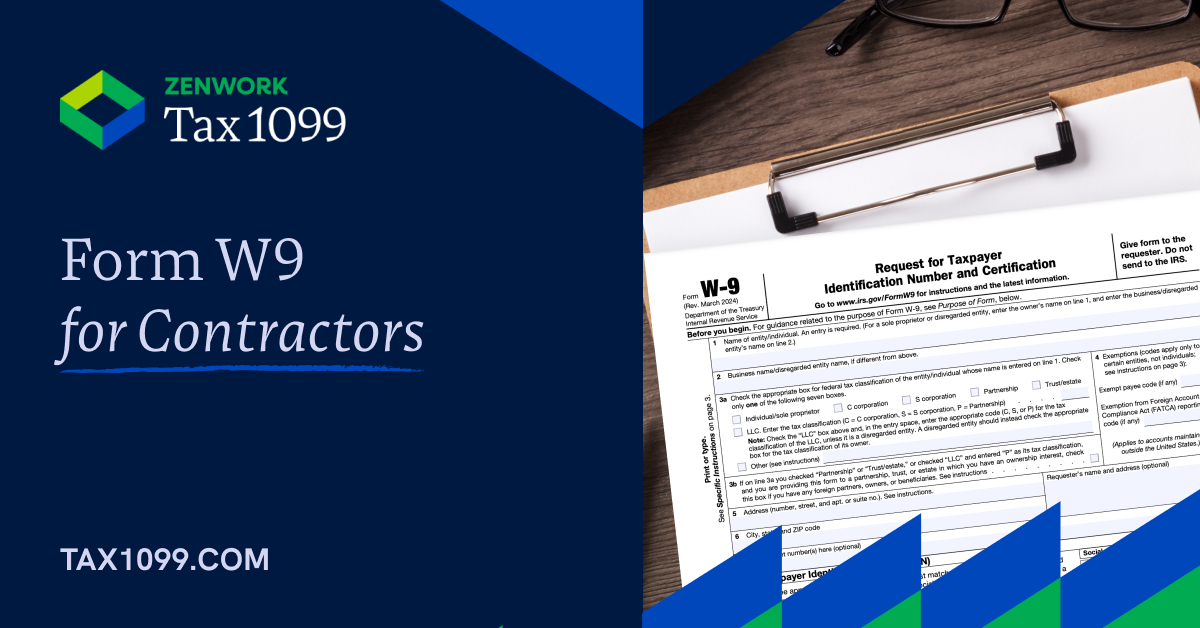Managing a company that balances independent contracts or employs outside contractors during tax season may be especially challenging. Form W-9 is one that commonly leads to misunderstandings. Understanding Form W-9 will help you stay in compliance with the IRS and make tax filing simpler if you are an independent contractor, freelancer, or business that employs non-employees. The W-9, its importance, and how to confidently fill it out will all be covered in this guide.
What is Form W-9?
Form W-9, also known as the “Request for Taxpayer Identification Number and Certification,” is a straightforward IRS form used to obtain crucial tax data from individuals and businesses that provide services as non-employees. Think about vendors, consultants, freelancers, and independent contractors—people and businesses that work together without the traditional pay relationship.
A valid TIN, usually an Employer Identification Number (EIN) for companies or a Social Security Number (SSN) for individuals, is acquired through the W-9 when a company works with a non-employee. The worker or business must also testify on the W-9 that their TIN is accurate and that they are not responsible for backup withholding (more on that later). Using the information from the completed W-9, Form 1099, which reports income paid to independent contractors for IRS tax purposes, is produced.
Why is Form W-9 necessary?
You may be asking yourself, why W-9? For the following primary reasons, it is essential for both companies and non-employee workers:
- Income Reporting: Companies are required by the IRS to record income to independent contractors who receive $600 or more annually. This approach needs the data that the W-9 provides.
- Backup Withholding: If a contractor’s TIN is incorrect or missing, or if they are due to withhold, the IRS requires businesses to withhold 24% of the contractor’s payment. Having an accurate and thorough W-9 can help avoid this.
- Accuracy & Compliance: Completing and obtaining accurate W-9 forms guarantees compliance, lowers the possibility of fines, and facilitates the process when tax season rolls around.
Who Needs to Complete a W-9?
Anyone compensated outside of the traditional employer-employee relationship is typically required to submit a W-9. This includes:
- Freelancers and Independent Contractors: Anyone providing services without receiving payment from the business must complete a W-9.
- Businesses frequently demand that consultants and contractors accurately record payments.
- Landlords and investors: Dividend or rental income, especially from financial institutions, may also trigger a W-9 request.
To put it another way, if you are making money or providing services that do not go via a conventional payroll, you will eventually need a W-9.
How to Fill Out Form W-9: A Step-by-Step Guide
The W-9 form is straightforward, but precision is crucial. Here is how to complete it, step-by-step:
Although the W-9 form is simple, accuracy is essential. Here is a step-by-step guide on finishing it:
- Type your full name exactly as it appears on your tax return in the first line (Name).
- Line 2-Business Name: Enter your company name or, if you are using one, “Doing Business As” (DBA).
- Line 3: Federal Tax Classification: Partnership, LLC, C Corporation, S Corporation, Sole Proprietorship, or Trust: Select the one that most closely corresponds to your position.
- Exemptions (Line 4): Unless you are exempt from backup withholding, this line is often left unfilled.
- Address: Enter the address you want tax-related forms to be sent to in Lines 5 and 6.
- Account Numbers on Optional Line 7: Fill this out only if the payer requests it.
- The TIN, which is your SSN if you are an entity or your EIN if you are a business, is entered in Part I-TIN.
- Section II: Accreditation: Sign and date the form to confirm the accuracy of the information; if not, it is deemed invalid.
Avoiding Common W-9 Mistakes
Although Form W-9 is simple to complete, even small errors can have detrimental effects. The typical mistakes listed below should be avoided:
- Inaccurate TINs can cause payment delays or backup withholding.
- Make sure you sign the certification that is missing! The form is incomplete if the signature is invalid.
- Information Outdated: If your name, place of residence, or tax classification changes, submit a new W-9.
- Uncertainty Regarding Backup Withholding: Be sure you understand your withholding status to avoid unforeseen deductions.
Tips for Keeping Your W-9 Secure
Because Form W-9 contains confidential information like your SSN or EIN, it is imperative that it be protected. Here is how:
- Before disclosing your W-9 to anybody other than verified payers, confirm that the organization requesting it is legitimate and trustworthy.
- When sending electronically, use encrypted email or secure file-sharing.
- Use a private or secure service instead of public fax machines to protect the privacy of your information.
Tax forms like the W-9 might be confusing, but a little preparation goes a long way. By ensuring compliance, avoiding penalties, and expediting tax time, understanding and properly utilizing Form W-9 can benefit both businesses and independent contractors. Therefore, regardless of whether your business regularly hires employees or independent contractors, become familiar with the W-9 to make tax season easier.



